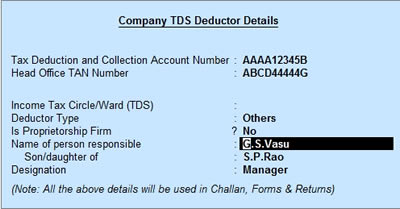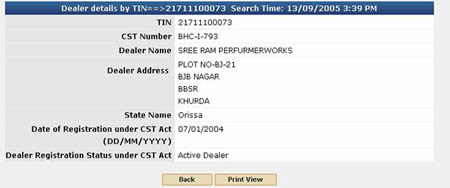Difference between PAN, TAN and TIN
Key Difference: A PAN number is a number for anyone who pays income taxes or has financial transactions. TAN is required for any organization that deducts or collects tax at source. A TIN number is required by any dealer or trader who is expected to and does pay Value Added Tax (VAT).
 PAN stands for Permanent Account Number. A PAN number is a number for anyone who pays income taxes or has financial transactions which would be applicable for taxes, such as but not limited to, “tax payments, TDS/TCS credits, returns of income/wealth/gift/FBT, specified transactions, correspondence, and so on.” It is also required for any financial transaction over the amount of Rs. 50,000.
PAN stands for Permanent Account Number. A PAN number is a number for anyone who pays income taxes or has financial transactions which would be applicable for taxes, such as but not limited to, “tax payments, TDS/TCS credits, returns of income/wealth/gift/FBT, specified transactions, correspondence, and so on.” It is also required for any financial transaction over the amount of Rs. 50,000.
Basically, the PAN represents the person or individual to the department. Hence, it should be used in regard to a variety of financial documents, such as payment of taxes, assessment, tax demand, tax arrears, etc., as well as anything relating to investment, loans and other business activities. So, in short, everyone should have a PAN number.
The Income Tax department breaks down the PAN number as such:
“A typical PAN is AFZPK7190K.
First three characters i.e. "AFZ" in the above PAN are alphabetic series running from
AAA to ZZZ
Fourth character of PAN i.e. "P" in the above PAN represents the status of the PAN holder. "P" stands for Individual, "F" stands for Firm, "C" stands for Company, "H" stands for HUF, "A" stands for AOP, "T" stands for TRUST etc.
Fifth character i.e. "K" in the above PAN represents first character of the PAN holder's last name/surname.
Next four characters i.e. "7190" in the above PAN are sequential number running from 0001 to 9999.
Last character i.e. "K" in the above PAN is an alphabetic check digit.”
 TAN, on the other hand, is required for any organization that deducts or collects tax at source. TAN stands for Tax Deduction and Collection Account Number. TDS stands for tax deducted at source, while TCS stands for tax collected at source. This can be a bank or even a company that deducts TDS from its employee’s salary. They must compulsorily quote their TAN number on all “TDS/TCS returns, TDS/TCS payment challans, TDS/TCS certificates, Annual Information Return and other documents as may be prescribed.”
TAN, on the other hand, is required for any organization that deducts or collects tax at source. TAN stands for Tax Deduction and Collection Account Number. TDS stands for tax deducted at source, while TCS stands for tax collected at source. This can be a bank or even a company that deducts TDS from its employee’s salary. They must compulsorily quote their TAN number on all “TDS/TCS returns, TDS/TCS payment challans, TDS/TCS certificates, Annual Information Return and other documents as may be prescribed.”
However, as this company would also have to pay its own taxes and would generally be involved in financial transactions, then it may also require a PAN number. However, not everyone having a PAN number needs a TAN number.
A TIN number stands for Taxpayer Identification Number. It is required by any dealer or trader who is expected to and does pay Value Added Tax (VAT). Manufactures, exporters, shopkeepers, dealers, ecommerce sellers, etc., are all requited to have a TIN number. It allows the seller to keep track of all their VAT payments under one account number, hence making things easier.
TIN was a method by the Income Tax Department of India to modernize the current system for collection, processing, monitoring and accounting of direct taxes, such as the VAT and the Central Sales Tax, using information technology. This system allows one to pay sales taxes or VAT in one state and have it automatically reflected when it’s time to pay in another state. Hence, it streamlines the processes from all individual states under one uniform national process. Hence, it is also often referred to as VAT number, CST Number or Sales Tax Number.
 TIN is irrespective of PAN and TAN. PAN and TAN are regulated by the Income Tax Department of the Indian Government, and are primarily used for the purposes of income tax and other associated functions, whereas TIN is regulated by the Commercial Tax Department and is associated with VAT and other direct taxes.
TIN is irrespective of PAN and TAN. PAN and TAN are regulated by the Income Tax Department of the Indian Government, and are primarily used for the purposes of income tax and other associated functions, whereas TIN is regulated by the Commercial Tax Department and is associated with VAT and other direct taxes.
Comparison between PAN, TAN and TIN:
|
|
PAN |
TAN |
TIN |
|
Full Form |
Permanent Account Number |
Tax Deduction and Collection Account Number |
Taxpayer Identification Number |
|
Used for |
Income Taxs |
Income Tax |
VAT or Sales Tax |
|
Country |
India |
India |
India |
|
Issued by |
Income Tax Department |
Income Tax Department |
Commercial Tax Department of respective state |
|
Number |
10 digit alphanumeric code |
10 digit alphanumeric code |
11 digit numeric code, where the first 2 digits reflect the state code |
|
Purpose |
A universal account number for all financial transactions |
An account to streamline deduction and collection of tax at source |
A universal code to track all VAT related activities in the country |
|
For whom |
People who pay income taxes |
For organizations that collect tax deducted at source |
For people or organizations who need to pay VAT or Sales Tax |
|
Fines |
Penalty of Rs.10,000/- is imposable for failure to comply with the provisions of PAN |
Failure to apply for TAN or not quoting the TAN in the specified documents attracts a penalty of Rs. 10,000/-. |
Differs state to state |
Reference: Income Tax Department, Govt of India (PAN and TAN), QuickBooks, BankBazaar Image Courtesy: bankbazaar.com, accounts4tutorials.com, tinxsys.com









Comments
atul
Fri, 12/09/2016 - 13:35
Add new comment